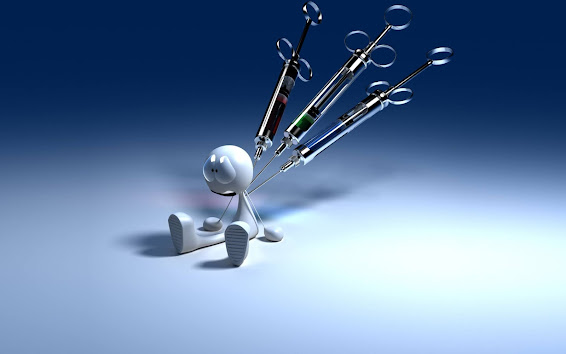Applications of Computer Graphics in Medical Training
Computer graphics have played a significant role in the advance of medicine. Since the mid 1970's, when the first three-dimensional visualizations of Computed Tomography 1 were reported, computer graphics have evolved to aid the medical profession in various aspects such as diagnosis, procedures training, pre operative planning and telemedicine (McCloy & Stone, 2001).
The use of computer graphics for medical diagnosis has provided an extraordinary ability to visualize, measure and evaluate structures in a non intrusive manner.
One of the most important areas in medicine where computer graphics have had a positive impact is training. Computer graphics provide new methods for learning, as professionals can test their skills in simulators and evaluate their performance in a virtual environment. Whereas traditional training in the medical area involved a great number of dissections in order to correctly learn about the human anatomy, computer graphics have provided 3D models that can be easily explored and interacted with. This allows the professional not only to use a 3D
model as a biography atlas but also interact with it to perform surgery rehearsals (Vidal, et al., 2006).
In the last few years, the area of medical simulators has grown to be an important part of medical training. With the use of simulators, professionals can learn how to proceed with delicate operations without endangering human subjects. This is only possible by using high-resolution 3D graphic representations of parts of the human body alongside mechanical instruments that convey the interaction between the user and the simulator system.
The human body has been modelled in high detail to offer 3D interactive graphical representations. A clear example can be found in projects deriving from the Visible Human Project (U.S. National Library ofMedicine, 2012). This project took sliced pictures of both male and female cadavers in order to document the human body.
From this data, several projects were born, such as Touch of Life Technologies' VH Dissector (Touch of Life Technologies, Inc., 2007). VH Dissector offers an interactive version of the bodies scanned by the Visible Human Project, and allow the user to not only explore the precisely labelled parts of the body, but also offers 3D instructions.
At a less professional level, the project Zygote Body (formerly known as Google Body) provides an openly available online 3D model of the human body that can be easily explored, tagged and searched (Zygote Media Group, Inc, 2012).
Another important aspect of education-related medical graphics applications is the creation of simulators. Several companies have developed highly advanced
simulator systems for medical training. A good example can be found within the products of the company Voxel-Man (Voxel-Man, 2009). Voxel-Man products include several surgery simulators that allow the user to interactively practice delicate procedures such as brain surgery without the need of real patients or cadavers.Furthermore, the company has developed dental procedure simulators for dental professionals.
Nowadays, graphic-intense applications are used extensively in medical training. From the early anatomy or biology classes in schools, where children are starting to use computers to interact and discover the human body, to advanced professional-oriented courses, 3D graphic applications are the key to medical skill building.
Simulation systems such as the ones mentioned above have revolutionized medical training, becoming a key part or, for example, dental surgery skill training or brain surgery exploration.
Most of the examples provided include static 3D models that do not require real-time effort as model, textures and layers are pre-calculated and simply processed for viewing from one angle or another.
Nevertheless, surgery simulation systems may also require complex simulation and real-time modelling to represent reactions to the user's moves such as a blood stream or the movement of flesh. These elements add a high complexity to the visualization
Thanks



Comments
Post a Comment